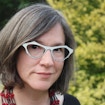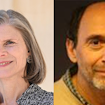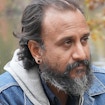Together, Math and Science Foundations Fund ‘Tabletop’ Physics That Could Transform Our Understanding of the Universe

Physics breakthroughs don’t always require city-sized particle colliders or giant radio telescope arrays. The Gordon and Betty Moore Foundation, the Simons Foundation, the Alfred P. Sloan Foundation and the John Templeton Foundation have partnered to fund 11 innovative “tabletop” experiments, many of which will explore realms of physics typically probed by large-scale facilities.
The newly funded projects, selected from hundreds of proposals, include hunting for dark matter, building ultra-precise atomic clocks, and examining the intersection of general relativity and quantum mechanics. These ambitious experiments all aim at expanding the frontiers of fundamental physics while still fitting into a typical room-sized university physics research lab.
By pooling their resources and expertise, the foundations have magnified the impact of their grantmaking and are able to collectively fund more projects. Each of the projects, described below, will receive funding for up to five years, with the four foundations together pledging $30 million for all the undertakings.

David DeMille of the University of Chicago and his team will develop a method to form a trapped gas of ultracold francium-silver molecules. They aim to use this gas to detect time-asymmetric forces in the atomic nucleus with significantly higher sensitivity than current experiments can achieve.
Gurudev Dutt of the University of Pittsburgh and his colleagues will magnetically levitate diamond crystals to create and measure macroscopic quantum superpositions and explore the interface between quantum physics and gravity.
Ron Folman of Ben-Gurion University of the Negev in Israel will lead the development of a nanodiamond spatial interferometer to help resolve the disconnect between quantum physics and general relativity by performing spin-based interferometry measurements.
Giorgio Gratta of Stanford University and his team will measure gravity at tiny scales using nuclear spectroscopy. The work will test the assumption that gravity works in the same way from macroscopic scales all the way down to the submicron level.
Jason Hogan of Stanford University will lead research that will use quantum sensing to measure the difference between the electric charges of protons and electrons with far higher precision than in previous determinations.
Gavin Morley of the University of Warwick in England will lead research that will levitate tiny diamonds in quantum spatial superpositions to explore the quantum nature of gravity.
Lyman Page of Princeton University and his colleagues will build a new experiment to search for proposed ultralight particles called axions that could be part of the mysterious dark matter that makes up roughly 85 percent of the universe’s mass.
Michael Tarbutt of Imperial College London and his team will search for evidence of new fundamental particles by measuring a property of the electron known as its electric dipole moment with 40 times the precision of current methods. The researchers will reach such precision using ultracold molecules trapped in an optical lattice.
Karl van Bibber of the University of California, Berkeley and his team will use a powerful superconducting magnet to search for axions.
Amar Vutha of the University of Toronto and his colleagues will implement a powerful new approach to finding instances of nuclear interactions that don’t follow the same behavior when time is reversed as when time flows normally. The team will hunt for these time-reversal symmetry violations using a combination of octupole-deformed nuclei, polarized atoms and highly coherent solid-state systems.
Jun Ye of the University of Colorado Boulder will lead the development of ultra-precise atomic clocks to perform the first experiments where quantum mechanics and general relativity both have measurable effects. The project will also involve novel laboratory-scale tests of foundational general relativity principles.


